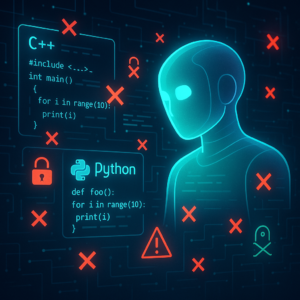Advancing LLM detection in the ALTA 2024 Shared Task: Techniques and Analysis

Advancing LLM Detection in the ALTA 2024 Shared Task: Techniques and Analysis
In a world where artificial intelligence (AI) scribes are becoming nearly indistinguishable from human writers, spotting the difference between AI-generated text and human-authored content has emerged as a critical challenge. As AI-generated content spreads its digital wings across different platforms, researchers like Dima Galat are stepping up to tackle this modern conundrum. The study “Advancing LLM Detection in the ALTA 2024 Shared Task: Techniques and Analysis” dives deep into these waters, proposing innovative techniques for AI detection—specifically designed to unmask the works of ChatGPT-3.5 Turbo.
The Bold Quest for AI Text Detection
Picture this: machines endlessly typing, crafting content that mingles with human creations without a second thought. The notion can be both exciting and daunting, primarily because distinguishing between AI-generated and human-authored content ensures authenticity and addresses significant ethical and security concerns.
In 2024, the ALTA Shared Task brings a unique spotlight to this issue, focusing on identifying AI-generated text nestled within hybrid articles. Using sentence-level evaluation, Dima Galat’s research seeks to pierce through the intricacies of AI text generation. But what makes their approach noteworthy? Enter the realm of ChatGPT-3.5 Turbo and its distinct linguistic fingerprint.
Unveiling the Linguistic Footprint of ChatGPT-3.5 Turbo
When AI flexes its linguistic muscles, it leaves behind a trail—a detectable series of repetitive probability patterns. The crux of Galat’s research is identifying these patterns within the robust walls of ChatGPT-3.5 Turbo, providing consistent detection even within its native domain. By homing in on these patterns, researchers are unwrapping the mystery of machine-generated content, creating avenues to safeguard genuine human expression.
Why ChatGPT-3.5 Turbo?
But why zero in on ChatGPT-3.5 Turbo? As one of the most advanced language models designed to date, ChatGPT-3.5 Turbo encapsulates AI’s potential in language processing. Its applications range from customer service bots and content creation to more complex multifunctional uses. As we lean more on such technologies, the emphasis on effective detection strategies becomes paramount.
Simplifying Complex Concepts
Detecting AI-generated text might sound like cooking up a secret recipe with layers of ingredients. But let’s break it down into simpler terms.
-
Sentence-Level Evaluation: Imagine evaluating the melody of a song instead of its entire symphony. Sentence-level evaluation does precisely that by examining individual sentences for AI-generated characteristics rather than the entire document.
-
Probability Patterns: Every time AI writes, it plays a numbers game. Each word choice carries a probability, and AI-generated texts often display repetitive patterns. These patterns are comparable to a signature—a rhythmic beat AI unwittingly hums along as it writes.
-
Consistent In-Domain Detection: This fancy term simply highlights that these detection techniques work exceptionally well within the same type of content or domain. Whether AI discusses tech, fashion, or anything else, these patterns remain a telltale sign of its involvement.
Practical Implications: What Does This Mean for You?
Whether you’re a content creator, educator, or the guardian of online authenticity, this research drops a bagful of insights your way:
- Content Authenticity: With robust detection methods, you can ensure the content you consume or create retains human nuances.
- Educational Integrity: For educators, new techniques to detect AI-generated assignments maintain academic fairness.
- Cybersecurity: With AI-enhanced phishing attempts on the rise, detection tools act as shields against AI-generated fraudulence.
Key Takeaways
-
Identifying AI’s Handprint: Through the use of sentence-level analysis, researchers can unmask AI writing, revealing the inherent repetitive probability patterns unique to tools like ChatGPT-3.5 Turbo.
-
Subtlety’s Little Impacts: Many would think slight textual tweaks could fool the system, but empirical tests show minor rewordings barely affect detection precision.
-
Path to Progress: The findings in this study pave the way for refined AI detection strategies. It informs future developments, allowing us to navigate the intricate interplay of human and AI-generated content with more confidence.
In a nutshell, while the penmanship of AI grows ever more sophisticated, this research marks a stepping stone in our journey toward maintaining the delicate balance between embracing technological advancements and preserving the authenticity of human voice.
By staying ahead of the curve and understanding AI’s capabilities, we can foster an environment where human creativity and AI complement rather than compete. So, let’s pick up the baton Dima Galat’s research has extended and strive for a future where AI detects its creations, allowing human authenticity to shine ever brighter.




